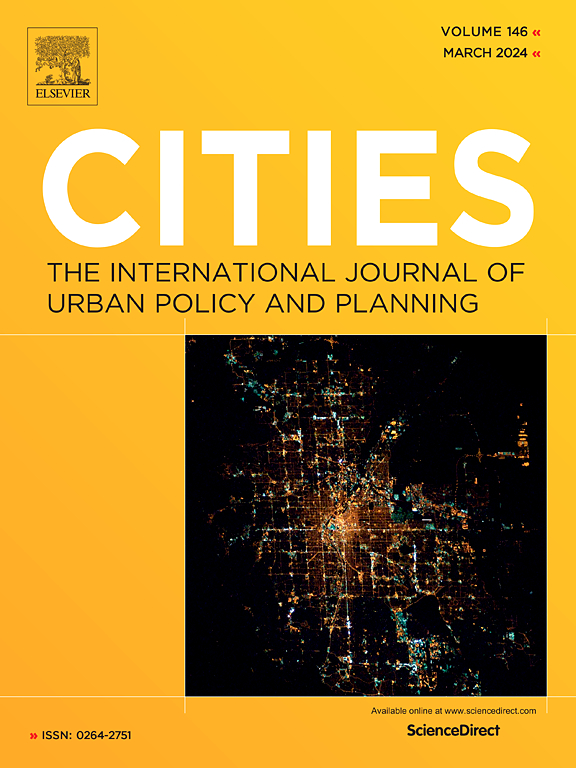看不见的链条:追踪中国城市碳经济不平等
IF 6.6
1区 经济学
Q1 URBAN STUDIES
引用次数: 0
摘要
碳经济不平等对可持续城市发展和公平减排构成重大挑战。本研究将环境扩展的多区域投入产出(EE-MRIO)模型与排放交易条件(ETT)指数相结合,从多维视角揭示了2012 - 2017年中国城市碳经济不平等的动态特征。随后,采用扩展的STIRPAT模型来识别这种不平等的驱动因素。研究结果表明,隐含碳排放和增加值在城市贸易链上的转移存在显著的不平等关系。从空间上看,贸易碳排放呈现由北向南、由内陆向沿海转移的总体趋势。综合评估显示,城市角色发生了动态变化,成为碳输家和经济赢家的城市比例最高。进一步分析表明,城市间碳经济不平等差异持续扩大,最高与最低ETT值之比从2012年的56.15增加到2017年的124.35。经济发展、人口规模、城市化、产业结构和能源消耗是影响这种不平等的关键因素。本研究为评估城市层面的碳经济不平等提供了一个系统框架,并为制定可持续城市政策提供了有价值的见解。本文章由计算机程序翻译,如有差异,请以英文原文为准。

Invisible chains: Tracking urban carbon-economic inequality in China
Carbon-economic inequality poses a significant challenge to sustainable urban development and equitable emissions reduction. This study combines an Environmentally Extended Multi-Regional Input-Output (EE-MRIO) model with the Emissions Trade Terms (ETT) index, revealing the dynamic characteristics of carbon-economic inequality in Chinese cities from 2012 to 2017 from a multi-dimensional perspective. Subsequently, an extended STIRPAT model is employed to identify the driving factors of this inequality. The results reveal significant unequal relationships in the transfers of embodied carbon emissions and value added across urban trade chains. Spatially, there is a general trend of trade-embodied carbon emissions shifting from north to south and from inland to coastal regions. A comprehensive evaluation shows dynamic changes in urban roles, with the highest percentage of cities performing as carbon losers and economic winners. Further analysis indicates that disparities in carbon-economic inequality between cities continued to widen, with the ratio of the highest to the lowest ETT value increasing from 56.15 in 2012 to 124.35 in 2017. Economic development, population size, urbanization, industrial structure, and energy consumption are critical factors influencing this inequality. This study offers a systematic framework for assessing carbon-economic inequality at the city level and provides valuable insights for developing sustainable urban policies.
求助全文
通过发布文献求助,成功后即可免费获取论文全文。
去求助
来源期刊

Cities
URBAN STUDIES-
CiteScore
11.20
自引率
9.00%
发文量
517
期刊介绍:
Cities offers a comprehensive range of articles on all aspects of urban policy. It provides an international and interdisciplinary platform for the exchange of ideas and information between urban planners and policy makers from national and local government, non-government organizations, academia and consultancy. The primary aims of the journal are to analyse and assess past and present urban development and management as a reflection of effective, ineffective and non-existent planning policies; and the promotion of the implementation of appropriate urban policies in both the developed and the developing world.
 求助内容:
求助内容: 应助结果提醒方式:
应助结果提醒方式:


